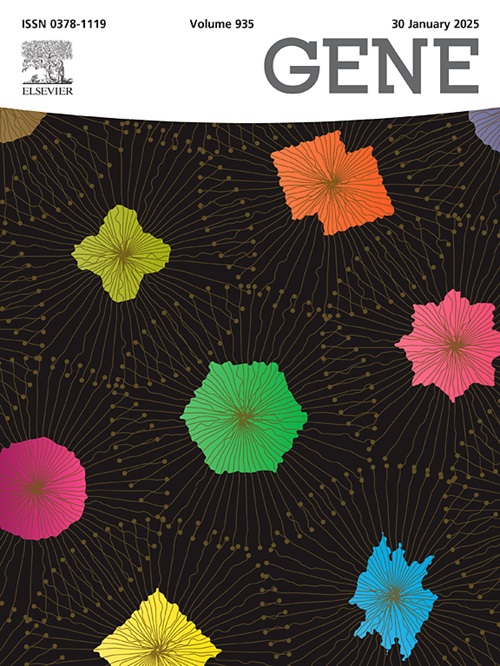The nature and pathological impact of the c.1748A > G variant of the neurofibromin 1 gene
IF 2.6
3区 生物学
Q2 GENETICS & HEREDITY
引用次数: 0
Abstract
Neurofibromatosis type 1 (NF1) is an autosomal dominant genetic disorder, and mutations in the NF1 gene lead to RAS overactivation, which stimulates abnormal cell proliferation and can cause various tumors. The c.1748A > G mutation in the NF1 gene was initially classified as a missense mutation, but has also been suggested to be a splice mutation. It is thought that the substitution of A for G generates a cryptic splice site, resulting in a 27 bp deletion in the mRNA transcript, but this conclusion has not been documented in currently available databases. The present study was conducted to establish whether the NF1 c.1748A > G mutation induces a splicing error, and to determine whether it is pathogenic i.e. activates RAS and increases the expression of NF1-related downstream signaling molecules. We have confirmed by RT-PCR analysis of NF1 transcripts produced in the patient’s peripheral blood lymphocytes as well as in a minigene construct and in iPSCs harboring the c.1748A > G mutation that this mutation creates a cryptic splice site which has the effect of deleting the first 27 bases of exon 16, and leading to transcriptional haploinsufficiency. Additionally, NPCs expressing the splicing mutant exhibited increased phosphorylation of NF1-related AKT/mTOR and Raf/MEK/Erk, as well as more effective wound healing and chemotaxis. We conclude that the NF1 c.1748A > G mutation acts as a splice mutation forming a novel cryptic site, causing a 27 bp deletion in the mRNA. This leads to increased expression of NF1-related downstream signaling molecules through RAS activation, inducing cell proliferation and potential tumor formation.

求助全文
约1分钟内获得全文
求助全文
来源期刊

Gene
生物-遗传学
CiteScore
6.10
自引率
2.90%
发文量
718
审稿时长
42 days
期刊介绍:
Gene publishes papers that focus on the regulation, expression, function and evolution of genes in all biological contexts, including all prokaryotic and eukaryotic organisms, as well as viruses.
 求助内容:
求助内容: 应助结果提醒方式:
应助结果提醒方式:


